Land Rover Explore review – in pictures
This rugged smartphone is an ideal hiking companion
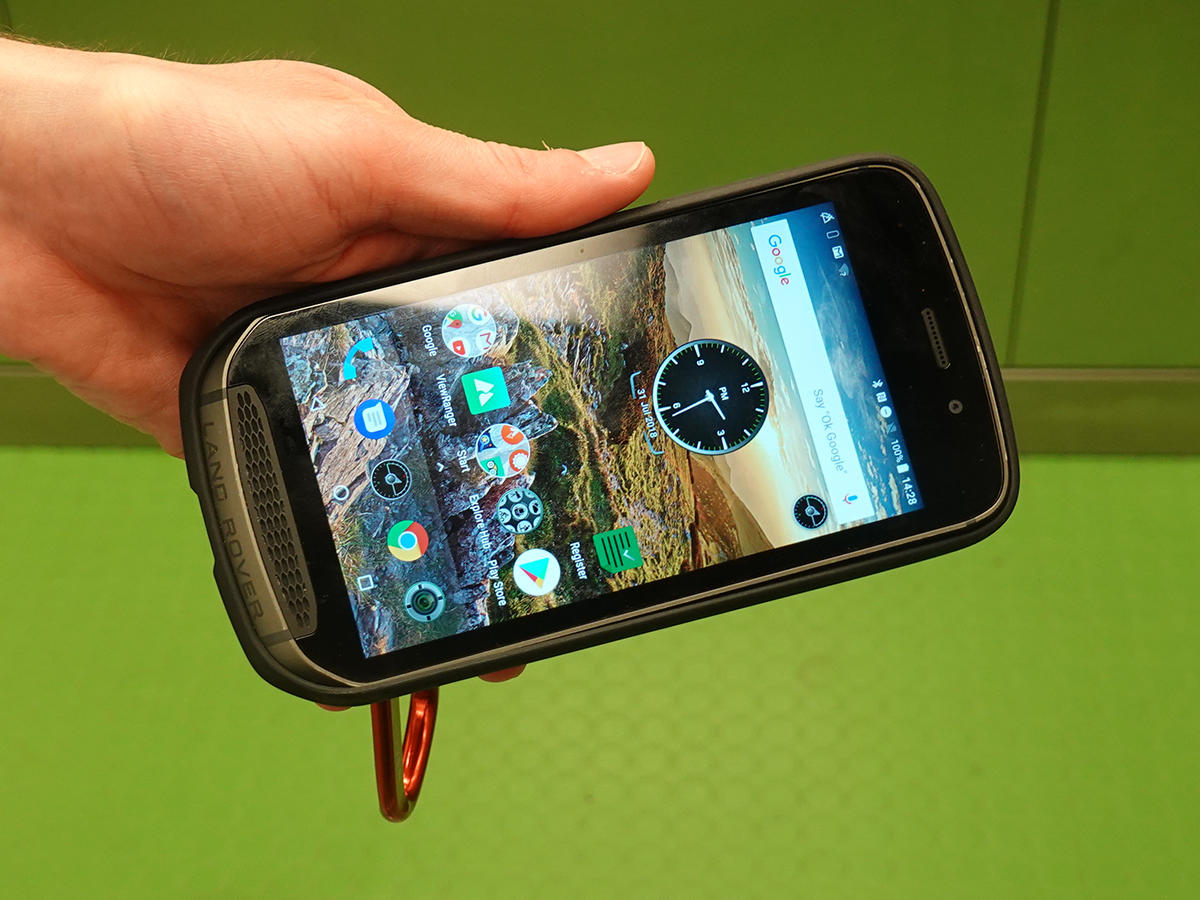
MADE FOR THE OUTDOORS
OK, so the concept of a rugged phone isn’t exactly new, but this British-made handset has some rather unique skills under its Batman-rivalling utility belt. Chief of them all is the Adventure Pack, which can be magnetically clipped onto the back of the Explore for healthy battery and GPS boosts. But at a £599 (around $800) price so steep that even the most experienced of hikers would hesitate to climb, this smartphone aims to be your permanent companion instead of just a drawer dweller that only comes out of hiding for an adventure. Whether you actually want this behemoth hanging from your hip at a cocktail bar is another question…
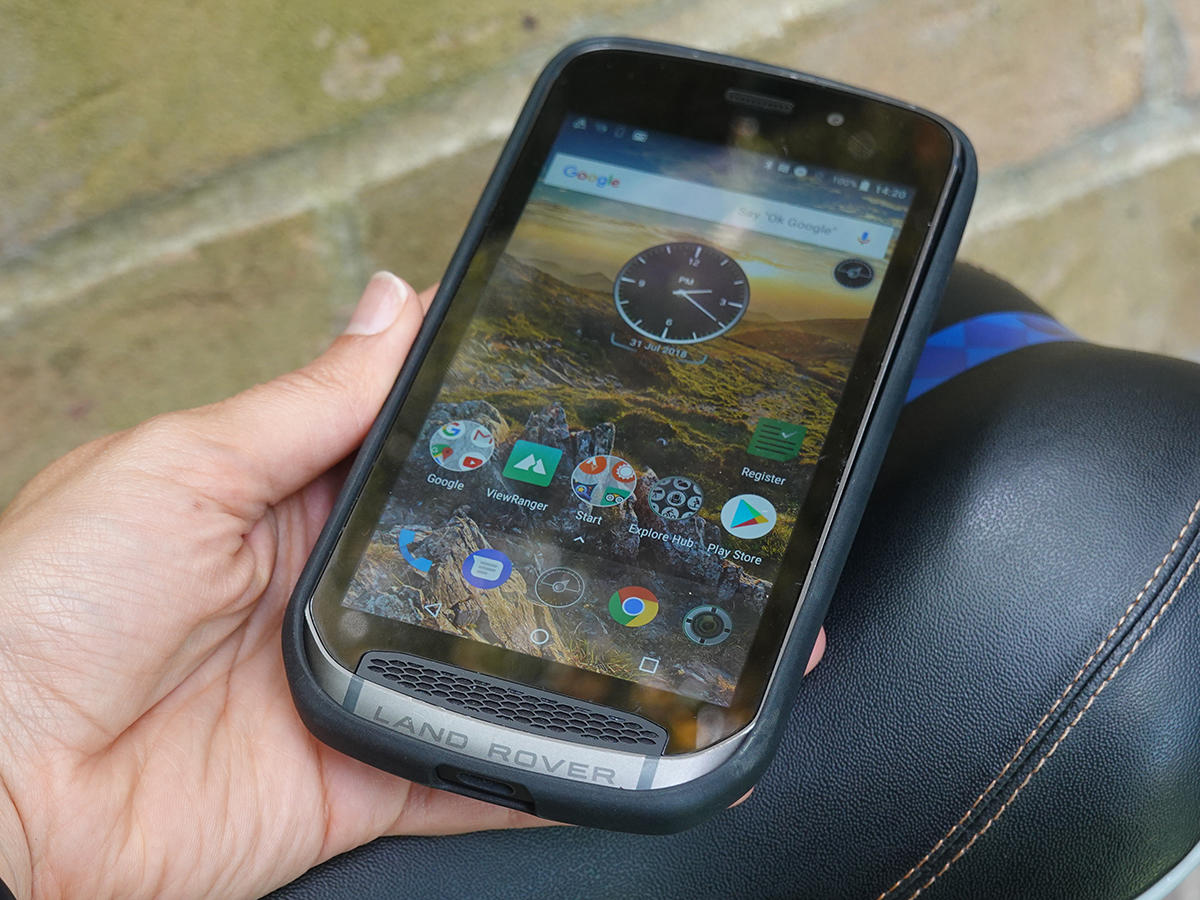
BORN SURVIVOR
Like Deadpool and Tom Cruise, the Explore’s signature move is being near-on indestructible. Chuck it down a mountain slope, dunk it one-metre deep into the ocean or subject it to extreme temperatures between -30°C and 65°C and it’ll survive to tell the tale. You even get a tough case and carabiner bundled in, just to prove this phone is for proper adventurers. For a rugged smartphone, the Land Rover Explore doesn’t look too shabby either. Sure, it’s got bezels beefy enough to make an iPhone user snort, but its smooth edges and button-less front make it one of the best-looking tough phones out there.
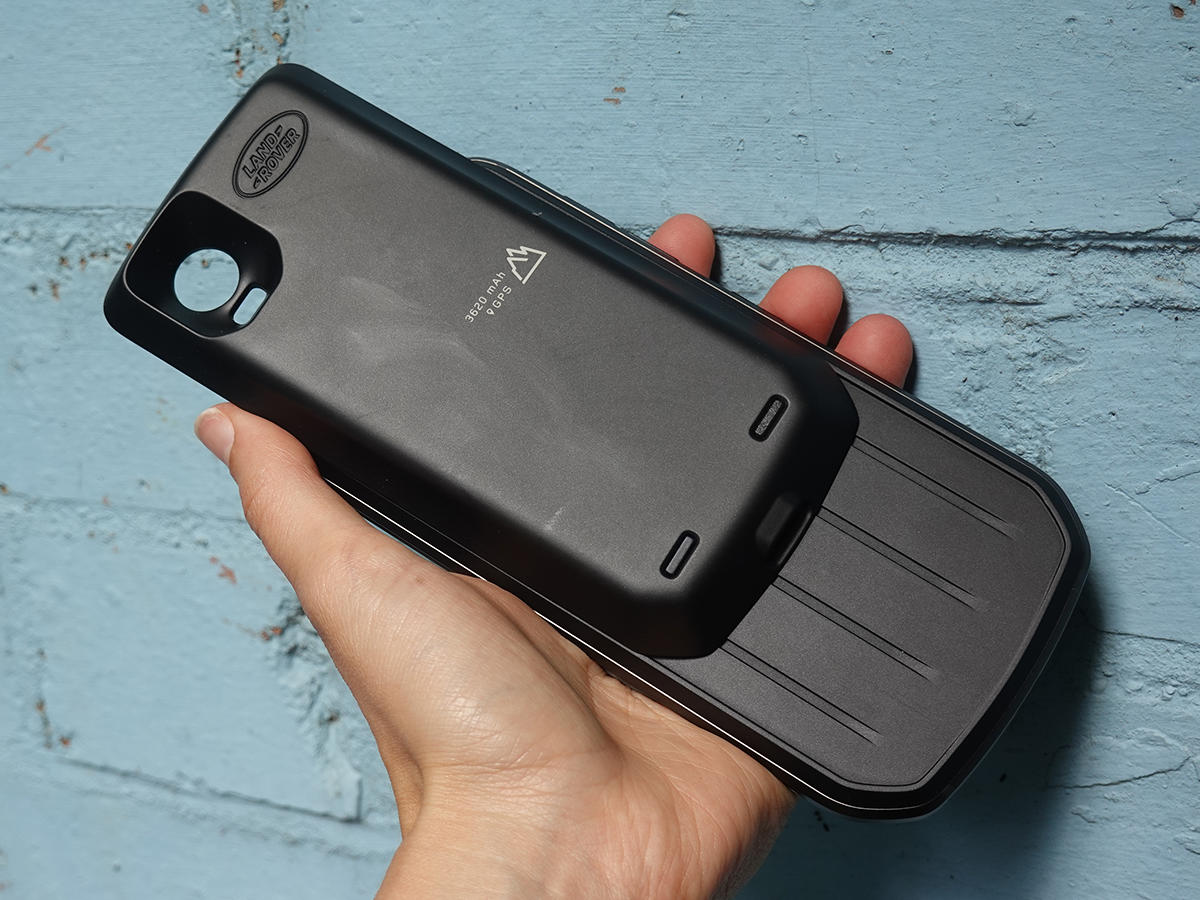
IMPRACTICALLY SPEAKING
But while having minimals buttons makes the Explore look great, it’s not exactly practical. There’s no home button or fingerprint scanner here, so the only way to wake it up from standby is to tap the power button on the side and then hammer in your passcode or sketch out your pattern. That’s not too much of an ask, but it’s undoubtedly frustrating when you’re shelling out around £600 ($800) for the thing. Below the screen is the speaker, which has been fashioned to resemble the front grille design of an actual Land Rover – you know, the things that you can drive. It’s a nice subtle touch, layering on some welcome brand personality. The speaker itself has a lot of gusto, so you can play your music over the bleating farm animals. But there’s also a headphone jack if you fancy using wired headphones.

NOT MUCH OF A LOOKER
Sadly, the Explore isn’t as pretty on the back as it is the front. It’s got the Land Rover emblem in the top-right corner, with magnetic nubs arranged horizontally across and deep grooves running vertically. These design choices haven’t been made in the name of fashion, but rather for practicality, allowing for the Adventure Pack – or the sold-sperately bike mount – to be easily snapped onto the back. It’s a rather chunky handset too. Think two iPhones strapped together. Clip on the Adventure Pack, and the Explore starts to get hefty enough to drag your shorts down to your ankles.

TAKE A SHINING
I’ve had a lot of fun testing how sturdy the Explore’s Gorilla Glass 5 screen is. Whether I dropped this phone face-first onto a corner of a table, the kitchen floor or the rocky shore of Brighton, it came away scratch free. You even get a screen protector, which feels as pleasingly excessive as giving a suit of armour to Superman. It’s a rather bright display too. OK, so it lacks the vibrancy of my OnePlus 6 and other high-end smartphones, but the Explore’s Full HD screen still offers plenty of detail and is easily visible in eye-stingingly sunny days. If I’m being picky, things can get rather fuzzy when watching low-light video, but it’s still perfectly suitable for watching the likes of Daredevil while curled up in a tent.
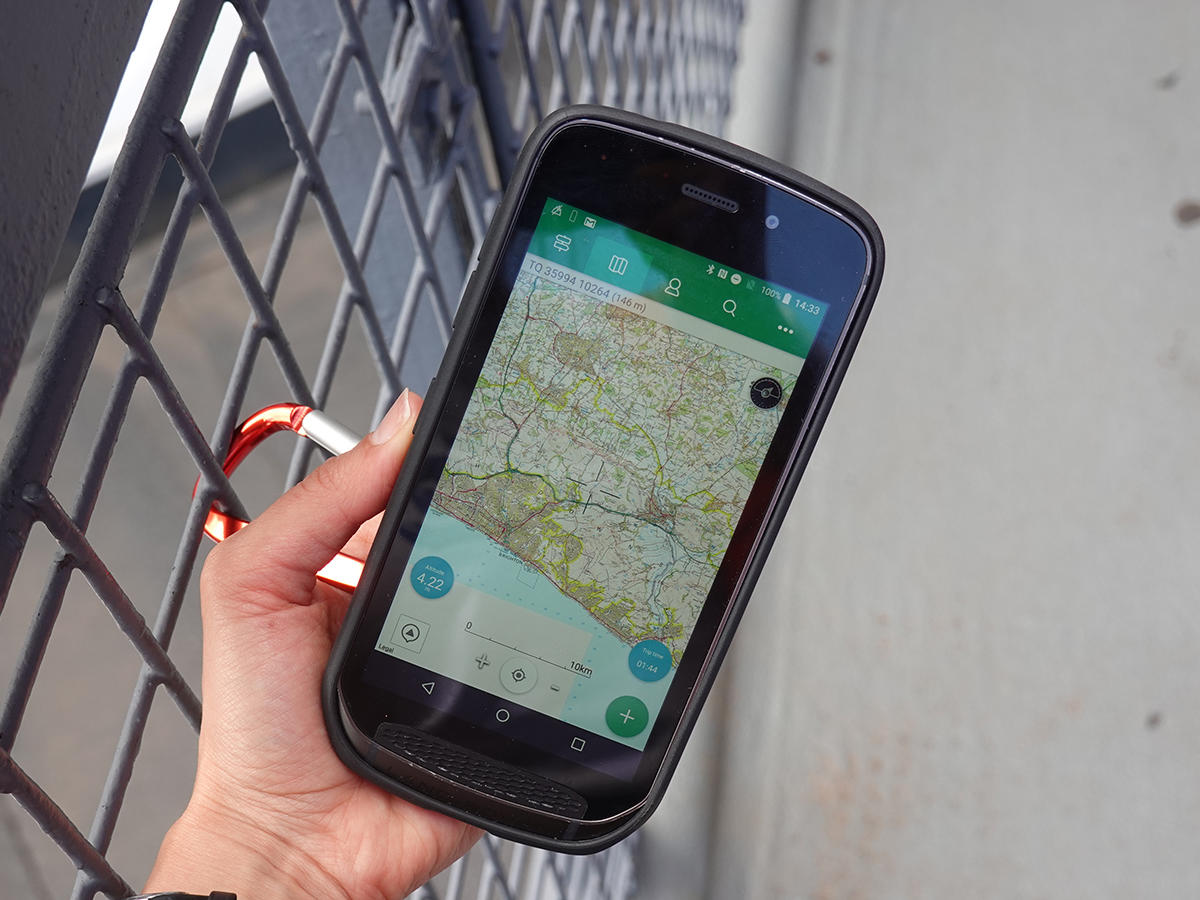
A NIPPY CUSTOMER
With the MediaTek Helio X27 processor and 4GB of RAM, the Explore is nippy enough to flit through apps, but it’s nowhere near the pace of similarly priced, non-rugged smartphones. That said, I was still able to run the likes of Asphalt 9 without any hitch or lag. Loading screens never seemed to outstay their welcome either. But let’s face it, if you’re buying this smartphone, you’re probably more into hiking than gaming, and there’s easily enough muscle here to run Google Maps and ViewRanger at full speed.

EXTRA LIFE
Since this is a phone purpose built for outdoor adventures, you won’t want the battery to zonk out halfway through the trek. But thanks to the 4000mAh cell, the Explore can easily keep on chugging through to the next day, even with heavy use and your 4G turned on. Fancy a weekend-long adventure? Snap the 3620mAh Adventure Pack to the back, and you’ll get almost double the battery life and improved GPS, although you’ll have to contend with the accessory’s extra weight and bulk. It’s probably best to wait until the campsite before you start recharging.
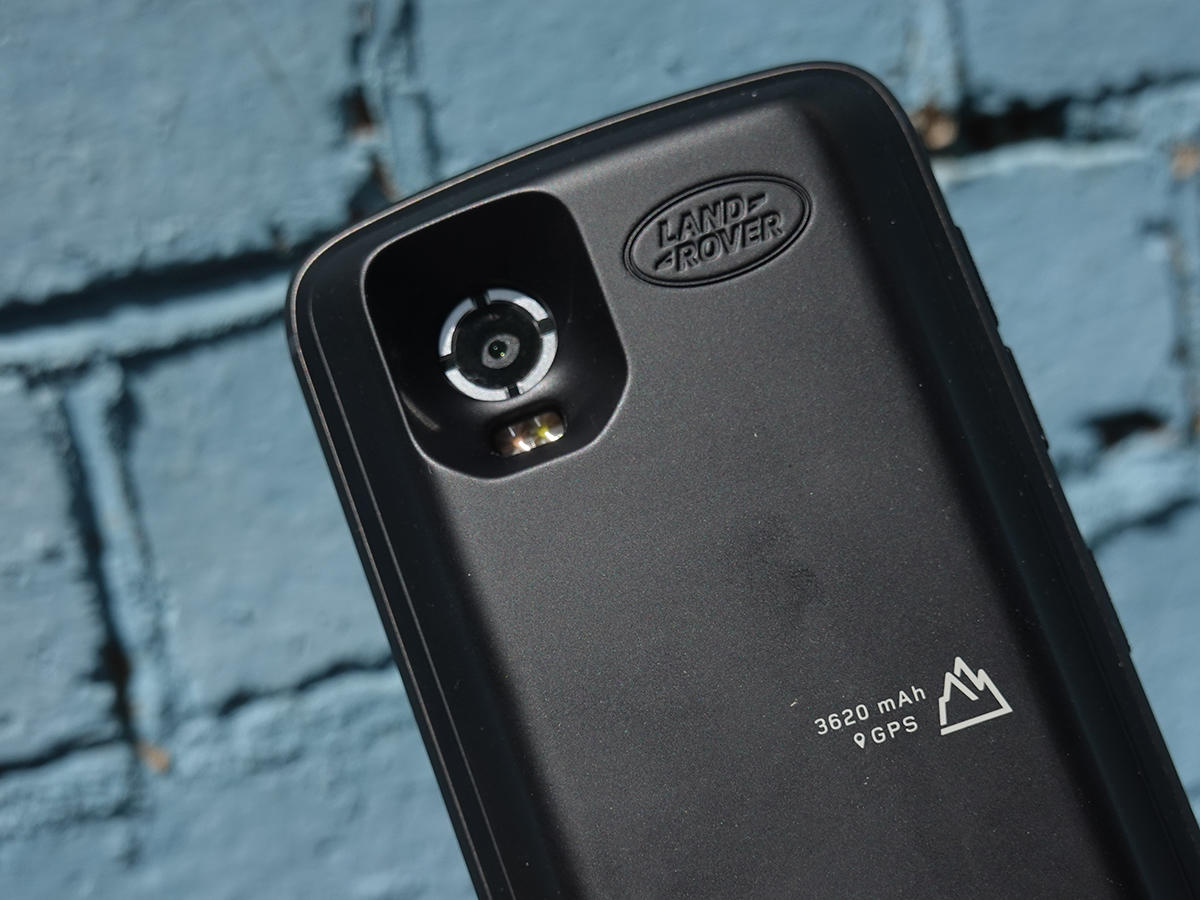
ANDROID ADDITION
With rugged phones, companies will often slather their own software on top of the operating system. Land Rover has refrained from doing so with the Explore, keeping Android Nougat as basic as possible – imagine a vanilla scoop with chocolate sprinkles. Swipe up and you’ll open the app tray, while you can flick left to open more pages of your favourite apps. With 64GB of storage, you’ve room for plenty of applications too. There’s even built-in NFC if you fancy going contactless for your payments. If you’ve ever used an Android phone before it will all be familiar. Oh, and you’ll also be able to upgrade to Oreo.
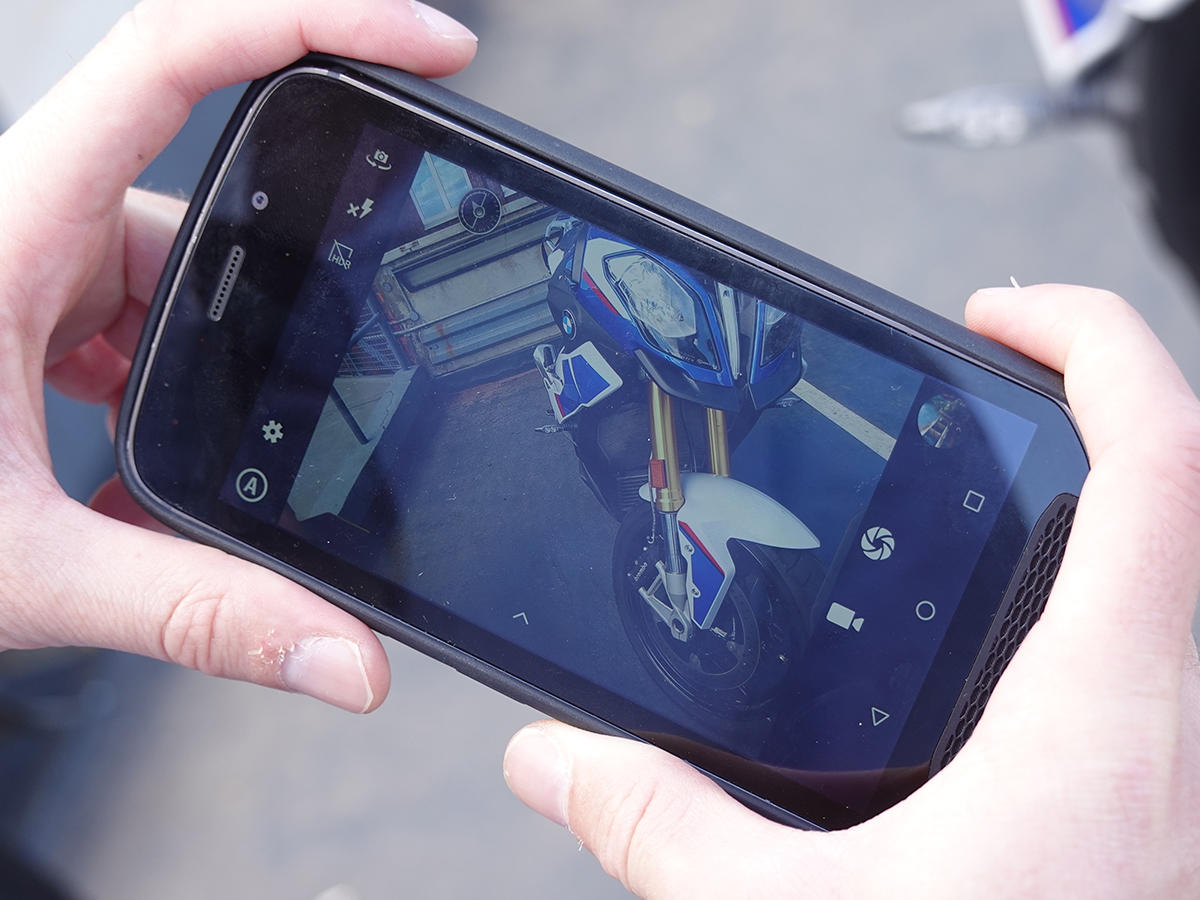
SURPRISING SNAPPER
While most iPhone users are generally city dwellers, the Land Rover Explore’s target audience encounters glorious sights on a weekly basis. Good job it’s got a decent camera so you can show off to your friends back home then. Snapping away with the rear 16MP sensor on the sunny-soaked coasts of East Sussex, I managed to get some surprisingly gorgeous photos. Images were always full of colour, but never oversaturated to the point that they look artificial. Quality was very dependent on the available light though. As soon as it started to get dark outside, images would look blurry and out of focus. It’s a similar story if you try to zoom in on your subject. This mainly because of the lack of a double-lens sensor, something we’ve come to expect if we want a top-notch smartphone camera.
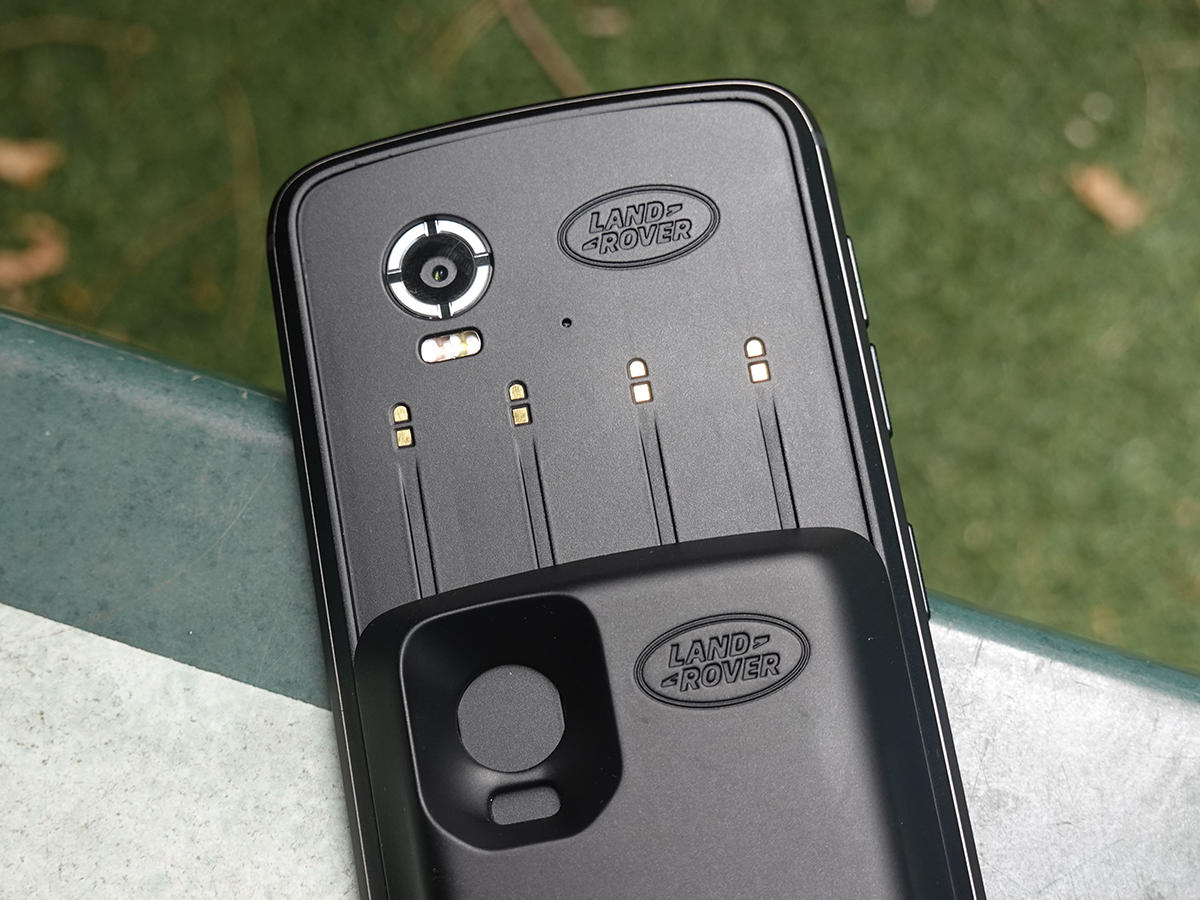
HOW DOES IT STACK UP?
At £599 ($800) the Explore costs more than double the price of its similar-specced competition. It’s got near-on identical specs to rugged phones such as the Doogee S60 and Ulefone Armour 2, so all you’re really getting for the extra cash is the modular flexibility and that Land Rover name. Oh, and the Doogee has wireless charging, so you could make the case that it’s actually a better all-round phone. And then there’s the AGM X2 SE rugged smartphone, which has superior specs compared to the Explore in almost every department. It’s got a bigger screen, an AMOLED display, a mighty 6000mAh battery and, to top it all off, a dual-lens camera that’s very capable of taking low-light photos. The real kicker though? The AGM X2 SE costs £210 less than Land Rover’s Explore – that’s quite frankly absurd.

LAND ROVER EXPLORE VERDICT
Ignore the price for a second, and the Land Rover Explore is close to being the perfect companion to your outdoor adventures. The modular capability to slap on an extra battery pack or a bicycle mount is unquestionably very useful, while the screen packs a punch, the camera can take some wonderful shots and – crucially – the phone itself can take a right old bashing. But the fact that you can get superior rugged smartphones for half the price is impossible to ignore. The Doogee S60 fulfills the need for hikers on a budget, while the the AGM X2 SE offers a more premium experience with a plethora of high-end features. It’s difficult to see why you’d buy the Explore ahead of either of these phones.


